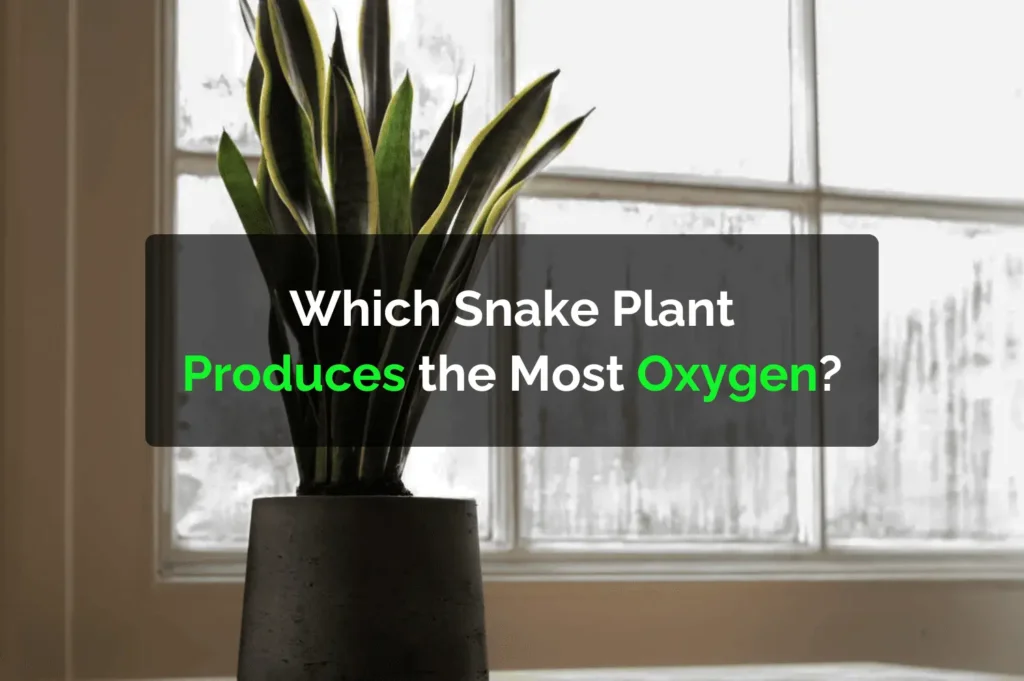Snake plants, also known as Sansevieria or Dracaena trifasciata, are famous houseplants because they look great and are super easy to take care of. But did you know that they are also powerful air purifiers? Snake plants release oxygen and absorb harmful toxins from the air, making them perfect for bedrooms, living rooms, and even offices.
If you’re wondering which snake plant produces the most oxygen, this article is for you. Let’s explore the top oxygen-producing varieties and how to get the best out of them.
Why Snake Plants Are Great for Oxygen
Snake plants are special because they use a process called CAM photosynthesis. Most plants release oxygen during the day, but snake plants continue to produce oxygen at night, which makes them perfect for places where people sleep or relax.
This ability is rare and makes the snake plant stand out. The more leaves and surface area the plant has, the more oxygen it can produce. So larger, healthier snake plants naturally release more oxygen into the air.
Top Oxygen-Producing Snake Plant
1. Sansevieria Trifasciata ‘Laurentii’
Also known as Mother-in-Law’s Tongue, this is one of the most popular snake plant varieties and the best for producing oxygen.
Why it’s the best:
- Grows tall (up to 4 feet) with broad, sword-shaped leaves
- Has thick, fleshy leaves that store water and stay healthy for long
- Produces more oxygen due to its size and leaf surface area
- Cleans the air of toxins like formaldehyde and benzene
You’ll often find this variety in homes, offices, and hospitals because of its strong air-purifying abilities.
Other Good Oxygen-Producing Snake Plants
2. Sansevieria Zeylanica
Zeylanica has long green leaves with wavy patterns but no yellow edges. It’s often mistaken for Laurentii but is just as effective in cleaning the air.
- Grows quickly and can survive with little care
- Excellent at removing indoor air pollutants
3. Sansevieria ‘Moonshine’
Moonshine snake plants have pale, silvery-green leaves that are wider than many other varieties. They’re not just pretty, they also release a good amount of oxygen.
- Reflects light well, giving a brighter room appearance
- Broad leaves help in better oxygen release
4. Sansevieria Cylindrica
This unique-looking snake plant has round, tube-like leaves. It may not release as much oxygen as Laurentii, but it still contributes to cleaner indoor air.
- Compact and modern appearance
- Good for smaller spaces like desktops or side tables
How to Maximize Oxygen from Your Snake Plant
1. Provide Indirect Sunlight
Snake plants don’t need direct sunlight but placing them in a bright, filtered light helps them grow faster and release more oxygen.
2. Avoid Overwatering
These plants store water in their leaves. Overwatering can cause root rot, which affects the plant’s health and reduces oxygen production.
3. Use a Well-Draining Pot
Choose pots with drainage holes and soil that doesn’t hold too much water.
4. Clean the Leaves
Dust can block sunlight and slow down photosynthesis. Wipe leaves gently with a damp cloth every few weeks.
5. Fertilize Occasionally
Use a balanced houseplant fertilizer during the growing season (spring and summer) to support healthy growth and oxygen production.
Best Places to Keep Snake Plants
- Bedroom: Releases oxygen at night and improves sleep quality
- Living Room: Adds beauty and cleans the air in shared spaces
- Office: Boosts air quality and mood
- Bathroom: Survives in low light and humid conditions
Frequently Asked Questions (FAQs):
Do all snake plants release oxygen at night?
Yes. Snake plants use CAM photosynthesis, which allows them to absorb carbon dioxide and release oxygen during the night
How many snake plants should I keep in a room?
One large plant or two medium-sized snake plants are enough for a small to medium room. For larger rooms, you can place multiple snake plants in different corners.
Can snake plants remove harmful chemicals?
Yes! Snake plants are known to remove formaldehyde, xylene, benzene, and trichloroethylene from indoor air.
Which is better (Laurentii or Moonshine)?
Both are great, but Laurentii has a larger leaf surface area, which means it usually produces more oxygen compared to Moonshine.
Conclusion
If you’re looking for a snake plant that produces the most oxygen, go for the Sansevieria Trifasciata ‘Laurentii’. It’s tall, strong, and easy to care for. Plus, it purifies the air day and night, helping you breathe better and live healthier.






